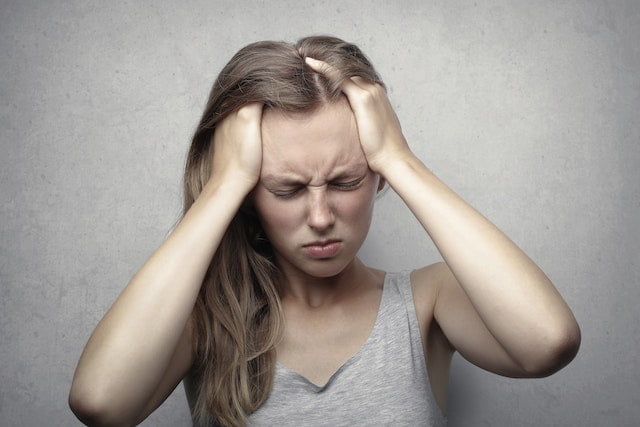Have you ever heard of a type of headache that impairs the quality of life so severely that people are forced to commit suicide or at least anticipate it? Unfortunately, this has been true for many patients who have been experiencing cluster headaches, or suicide headaches, for a long period that they took a step to end their lives considering the disease untreatable. Luckily, that is not the case.
Cluster headaches are preventable as well as treatable. One should just be aware of the methods which can be employed to manage this disorder. Let us understand what cluster headaches are, why are they caused, and what steps can be taken for their treatment.
What are cluster headaches?
Cluster headaches are the types of primary headaches that cause severe pain, precisely more than those occurring in migraines, in a cyclic pattern or, as they are named, a cluster. This one-sided pain lasts for 30 to 45 minutes can occur up to 8 times in a single day and continues to stretch over weeks, sometimes months. People between the age ranges of 20 to 40 years are prone to this disorder.

Cluster headaches
What causes cluster headaches?
Cluster headaches belong to a category of primary headaches i.e. a brain response is responsible for their initiation rather than the presence of a disease (which is the case in secondary headaches). Physiologically, the hypothalamus is the point from where the cluster headaches start and proceed toward the trigeminal nerve hence the condition has been named trigeminal autonomic cephalgia (TAC).
Symptoms of a cluster headache
Cluster headache usually start at the same time every day especially at bedtime or right after going to sleep. Individuals who suffer from the condition report that the severity of nighttime headaches is much more than those that occur during the day. These cluster headaches come with the following symptoms:
- Burning or piercing sensation at a certain side of the head
- Discomfort and agitation
- Redness of the face
- The feeling of warmth on the face
- Pain and redness around the eyes
- Drooping and inflamed eyes
- Increased sensitivity to light
- Tearing or watering
- Runny nose or nasal congestion
- Sweating
What triggers a cluster headache?
Multiple triggering factors can be held responsible for the initiation or worsening of an episode of cluster headaches. These include several food items, certain smells, as well as alterations in day-to-day weather patterns. Knowing this information can help avoid the triggers and thus prevent cluster headaches. Some of these triggers include:
- Strong smells
- Bright lights
- Moderate to severe exercise or strenuous physical activity
- Heat or high-temperature
- Hot baths
- Nitrates-rich foods such as bacon, hot dogs, or preserved meat
- Cigarette smoke or tobacco
- Alcohol
- Narcotics i.e. cocaine
Treatment for cluster headaches
Treatment options for cluster headaches include a number of options depending upon the state in which the patient approaches the healthcare facility. Therefore, the therapeutic options for cluster headaches have been classified into the following groups:
Abortive therapy:
Abortive therapy is started as soon as a person with an active episode of a cluster headache seeks medical help. A therapy or medication from the list given below is recommended by the physician according to the suitability.
- Oxygen therapy
- Triptans i.e. Sumatriptan and Zolmitriptan etc. in the form of nasal sprays
- Dihydroergotamine or DHE in the form of an injection
- Topical capsaicin cream or nasal spray
- Melatonin
Preventive therapy:
To stop the occurrence of cluster headaches, several drug options are employed. These drugs cannot eliminate the headaches completely but are helpful in reducing their frequency. These include:
- Propranolol or Verapamil for reduction of blood pressure
- Prednisolone, a corticosteroid to decrease nervous inflammation
- Ergotamine tartrate to minimize vasodilation
- Topiramate or valproic acid as anti-seizure drugs
- Baclofen or other muscle relaxants
- Antidepressants
- Lithium carbonate
- Divalproex sodium
- Galcanezumab
Surgical treatment:
The trigeminal nerve can be permanently disabled through surgery which, though results in the complete elimination of cluster headaches, has serious and far-reaching side effects.
Electrical stimulation:
Electrical stimulation is one of the novel methods to treat a cluster headache. Medical devices are placed over the upper gums and mild electrical signals are passed towards the brain centers. The treatment, although novel, has been promising during initial trials.

Management of cluster headaches helps lead a healthy life
How to prevent a cluster headache?
By taking simple steps regarding one’s lifestyle and dietary habits, it is possible to prevent an episode of a cluster headache. However, these changes may not give full recovery from the condition, there is ample scientific evidence to prove their efficacy. These methods include the following:
Lifestyle changes:
One must modify her or his lifestyle to get rid of cluster headaches up to an extent, if not completely. These changes include staying away from the triggers such as alcohol, high temperature, etc. Taking the prescribed medications with regularity also in reducing the frequency.
Magnesium supplements:

Magnesium supplements
Individuals with low magnesium levels are more prone to a cluster headache. It is therefore essential to include magnesium-rich foods such as spinach, bananas, beans, cashew nuts, pumpkin seeds, etc. in the diet.
Breathing exercises:
Getting involved with breathing exercises such as pursed lip breathing as well as box breathing helps increase the oxygen level in your bloodstream. This not only helps you calm down and relax but also proves to be effective in the management of pain in case of an existing cluster headache.
Kudzu extract:
Although more studies still need to be carried out to prove this point, kudzu extract, which comes from the kudzu vine, is considered to be effective in the management of cluster headache.
Conclusion
Cluster headache is one the major type of headaches that negatively impacts a person’s quality of life with high severity. They cause much discomfort to the patient which includes the presence of a burning sensation in the head and face, severe pain centered at one point, and nasal issues among others. When it comes to treating cluster headaches, no single definite therapy is available. However, with some medications and certain lifestyle changes, one can live a happy and healthy life with the disorder.

PhD Scholar (Pharmaceutics), MPhil (Pharmaceutics), Pharm D, B. Sc.
Uzma Zafar is a dedicated and highly motivated pharmaceutical professional currently pursuing her PhD in Pharmaceutics at the Punjab University College of Pharmacy, University of the Punjab. With a comprehensive academic and research background, Uzma has consistently excelled in her studies, securing first division throughout her educational journey.
Uzma’s passion for the pharmaceutical field is evident from her active engagement during her Doctor of Pharmacy (Pharm.D) program, where she not only mastered industrial techniques and clinical case studies but also delved into marketing strategies and management skills.
Throughout her career, Uzma has actively contributed to the pharmaceutical sciences, with specific research on suspension formulation and Hepatitis C risk factors and side effects. Additionally, Uzma has lent her expertise to review and fact-check articles for the Health Supply 770 blog, ensuring the accuracy and reliability of the information presented.
As she continues her PhD, expected to complete in 2025, Uzma is eager to contribute further to the field by combining her deep knowledge of pharmaceutics with real-world applications to meet global professional standards and challenges.








